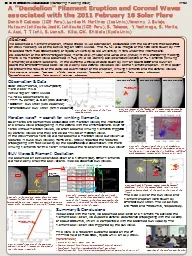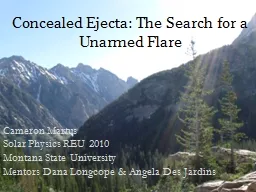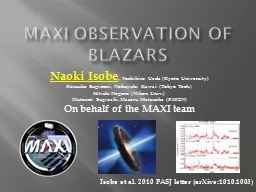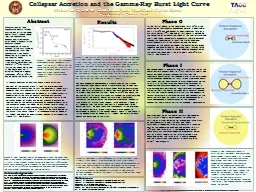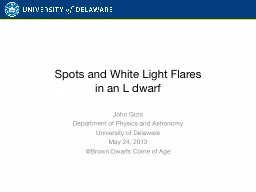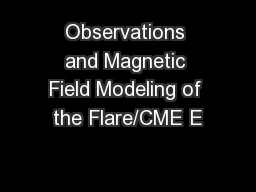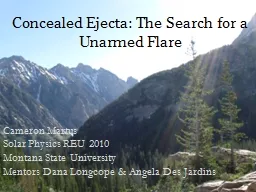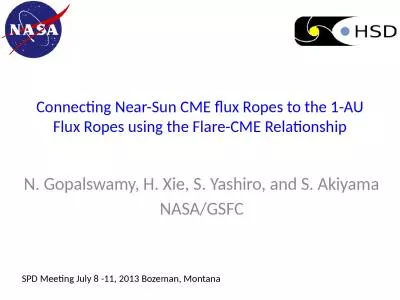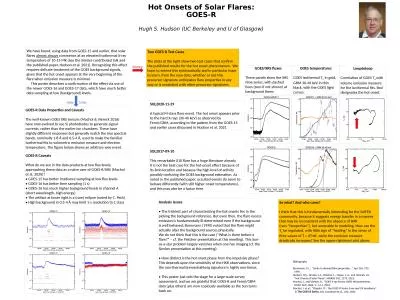PPT-Fig1. X-ray light curve of the flare taken by GOES.
Author : min-jolicoeur | Published Date : 2016-08-12
Abstract We observed a filament eruption whose shape is like a dandelion associated with the solar flare that occurred on 2011 February 16 at the active region NOAA
Presentation Embed Code
Download Presentation
Download Presentation The PPT/PDF document "Fig1. X-ray light curve of the flare tak..." is the property of its rightful owner. Permission is granted to download and print the materials on this website for personal, non-commercial use only, and to display it on your personal computer provided you do not modify the materials and that you retain all copyright notices contained in the materials. By downloading content from our website, you accept the terms of this agreement.
Fig1. X-ray light curve of the flare taken by GOES.: Transcript
Download Rules Of Document
"Fig1. X-ray light curve of the flare taken by GOES."The content belongs to its owner. You may download and print it for personal use, without modification, and keep all copyright notices. By downloading, you agree to these terms.
Related Documents

